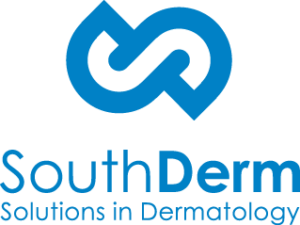Skin Cancers
Overview
WHAT IS SKIN CANCER?
Skin cancers are a collection of abnormal (malignant) cells that grow and invade the surrounding normal skin cells and tissue. Australia has the highest rate of skin cancer in the world. The specialist dermatologists at SouthDerm, Kogarah, southern Sydney are industry leaders in the detection and treatment of skin cancer.
Types of Skin Cancer
There are three main types of skin cancer:
- Basal cell carcinoma (BCC) – click here to download PDF factsheet
- Squamous cell carcinoma (SCC) – click here to download PDF factsheet
- Melanoma
Basal cell carcinoma
Basal cell carcinoma (BCC) is the most common type of skin cancer. These cancers grow quite slowly, often over many years, and are the least dangerous type of skin cancer. BCCs can occur anywhere on the body but are most commonly found on the face, around the eyes, nose and lips. They rarely spread to other parts of the body. BCCs are usually curable with good cosmetic results.
There are four main types of BCCs:
- Nodular BCC: appear as firm shiny red bumps, sometimes developing into an ulcer.
- Pigmented BCC: similar to nodular BCC but are a dark grey/black colour, which may look similar to melanoma.
- Superficial BCC: flat red patches commonly seen on the back and chest.
- Morphoeic/infiltrating BCC: also known as sclerosing BCC; often skin coloured or yellow/white, making them more difficult to detect than the other BCCs; often present late in development and may require more extensive surgery to remove.
Squamous cell carcinoma
Squamous cell carcinoma (SCC) is the second most common type of skin cancer. These cancers tend to grow more quickly than BCCs and usually look like a red scaly bump or non-healing sore. They are most commonly seen in areas that are significantly sun damaged such as the hands, face and lower legs. Treatment is usually very successful, however if left untreated, SCCs may spread to other parts of the body, particularly if they are larger than 2 centimetres in diameter or deeper than 6 millimetres.
Melanomas
Melanomas are much less common than BCCs or SCCs, but are the most serious type of skin cancer. They are more likely to spread to other parts of the body if not detected and treated in the early stages.
Melanomas usually appear as flat, irregularly shaped lesions. They may look a bit like a mole but there are key differences between moles and melanomas:
- Melanomas tend to have uneven edges and patchy colouring, with areas of black, red or brown pigments. Moles tend to be symmetric with even borders and colouring.
- Melanomas tend to change size, shape and/or colour over a relatively short time (several months). Ordinary moles tend to remain the same size and appearance for many years.
Approximately one third of melanomas can develop from a pre-existing mole.
All medical and skin cancer treatments are carried out in our southern Sydney, Kogarah, skin cancer and cosmetic surgery clinic.
Treatment
Skin cancers should be treated as early as possible to maximise the chances of a cure. Some lesions can be treated without the need of surgery whilst others require surgical intervention. Our specialist dermatologists at SouthDerm, Kogarah, Sydney, will advise you on the best options for your individual condition.
NON-SURGICAL TREATMENTS
Cryotherapy
Cryotherapy involves spraying liquid nitrogen onto the skin cancer to freeze the cancer cells. This technique is most suited to small superficial skin cancers. It often leaves a flat white scar.
Topical therapy
Special creams can be applied to skin cancers each day for several days or weeks, causing the body’s own immune system to attack and destroy the cancer cells. This is known as topical immunotherapy. The area will usually become inflamed during the treatment period as the cells are being destroyed. This treatment is most suitable for superficial skin cancers, particularly larger shallow lesions where surgery might leave a scar. Common therapies used in Australia include Imiquimod, Ingenol Mebutate and 5-Flouro-uracil.
Photodynamic therapy (PDT)
PDT begins with the application of sensitising cream to the surface of the skin cancer. The area is then covered for three hours. After uncovering the lesion it is exposed to a special red light treatment for eight minutes. The light reacts with the sensitised skin cells, causing the cancerous cells to die while the normal cells remain unaffected. PDT is suitable for pre-cancerous sun spots (keratoses) and some superficial skin cancers.
Radiation
Radiation treatment is often used for patients where other treatment alternatives are not suitable for elderly patients or for people in poor health. Radiation directs X-ray beams at the skin cancer site over several treatments until the cancer cells have been destroyed. Initial cosmetic results are good, but a yellowish scar typically develops over five to ten years following treatment.
SURGICAL TREATMENTS
Curettage and cautery
Following application of a local anaesthetic, the skin cancer is carefully scraped away and then a special hot-tipped device or ‘electric needle’ is applied to the area. This helps to stop any bleeding and helps to destroy remaining skin cancer cells. This treatment is usually only suitable for superficial (not very deep) BCCs and some SCCs that are away from the face. The wound typically heals well with a flat scar, giving a good cosmetic result in most cases and a good cure rate when performed by a specialist dermatologist.
Simple surgical excision
Surgical removal of skin cancers can be used for all types of lesions. Surgery involves careful removal of the skin cancer followed by stitches to bring the skin together. Treatment of melanomas usually involves excision of the melanoma and some surrounding tissue, and regular monitoring after surgery. Surgery is optimally performed in SouthDerm’s day procedure facility to give the best cosmetic results.
Advanced surgical excision
Some skin cancers can leave large defects when they are removed. As most skin cancers are on the head and neck, these defects are often on the face. The dermatologic specialists at SouthDerm perform complex closures using flaps and grafts when necessary, so that you have the best cosmetic result. Naturally these procedures are carried out in our licensed day surgery centre. Laser resurfacing can be used to further improve scarring when required.
Mohs micrographic surgery
Mohs micrographic surgery is mainly used to treat large, deep and recurrent skin cancers and is also useful for treating skin cancers located in difficult areas such as the ears, eyes and nose. This technique is used in a minority of cases requiring a very specialised and precise surgical technique, and has an excellent cure rate of 98–99%.
The Mohs technique involves removing the skin cancer lesion and very thin layers of surrounding skin. Each layer of skin is examined under a microscope and the procedure is repeated until all cancer cells are gone (called clear margins). This technique allows the specialist to control the amount of skin that is removed and conserve as much healthy skin as possible. The specialist then repairs the area using precise plastic surgery techniques to minimise the development of scarring.
Dermatologists must undergo specialised training to carry out Mohs micrographic surgery and the specialist dermatologists at SouthDerm have this qualification. Click here for more information on Mohs micrographic surgery.

